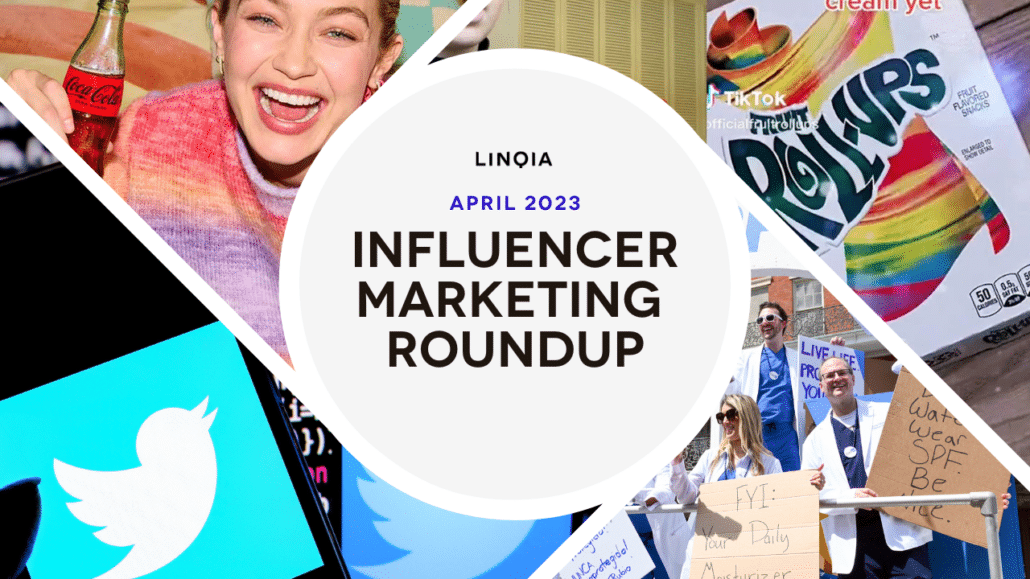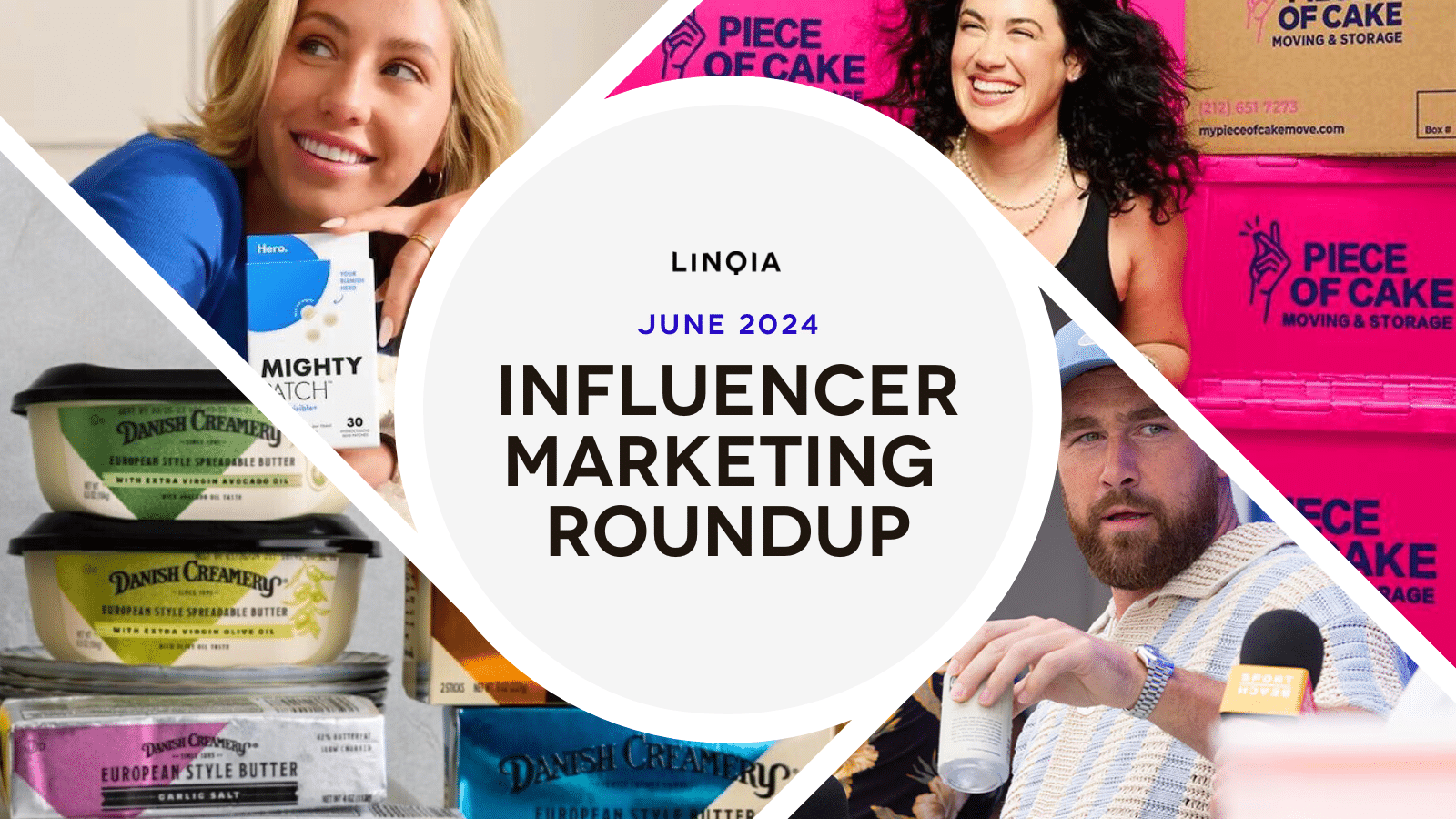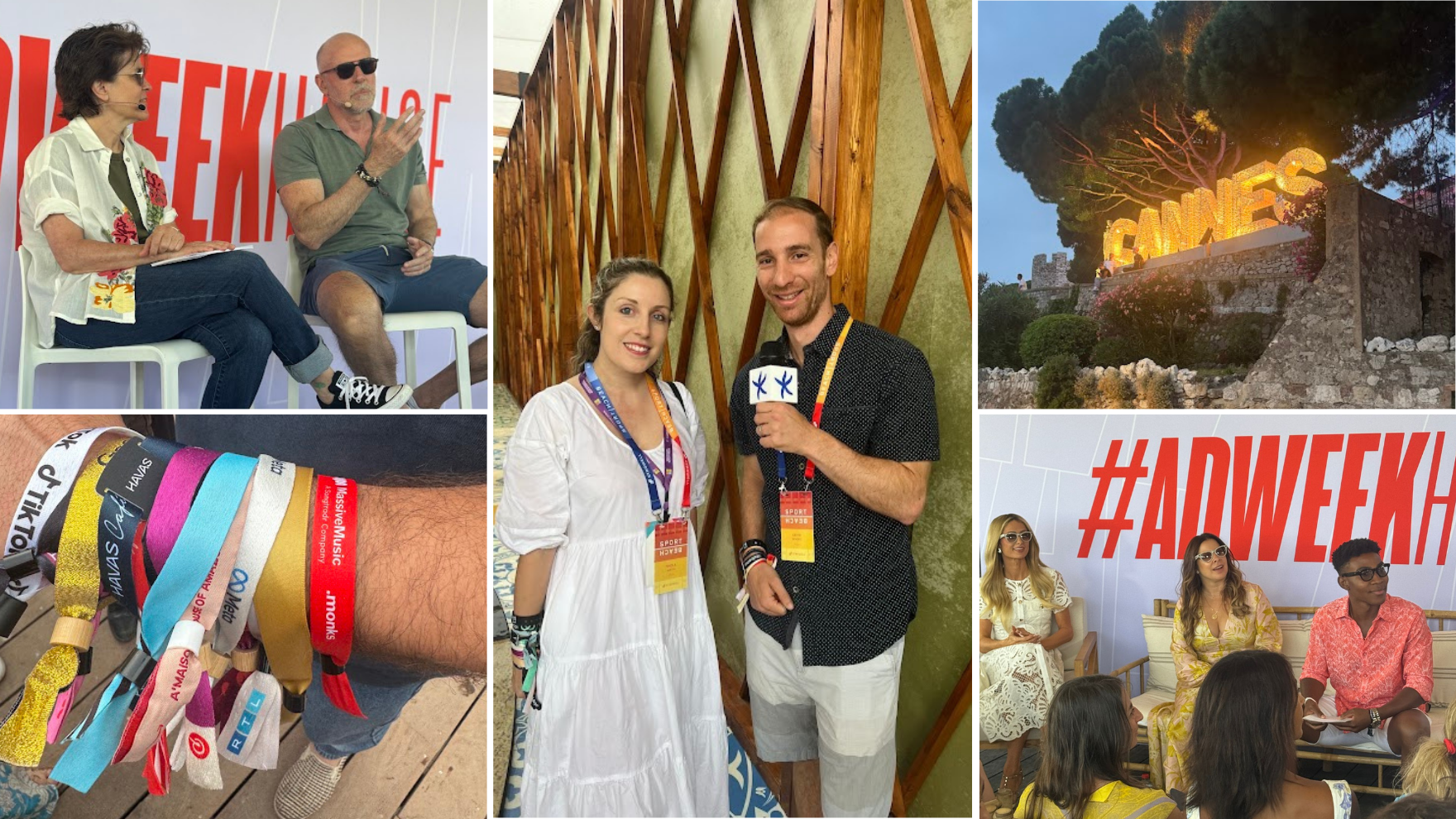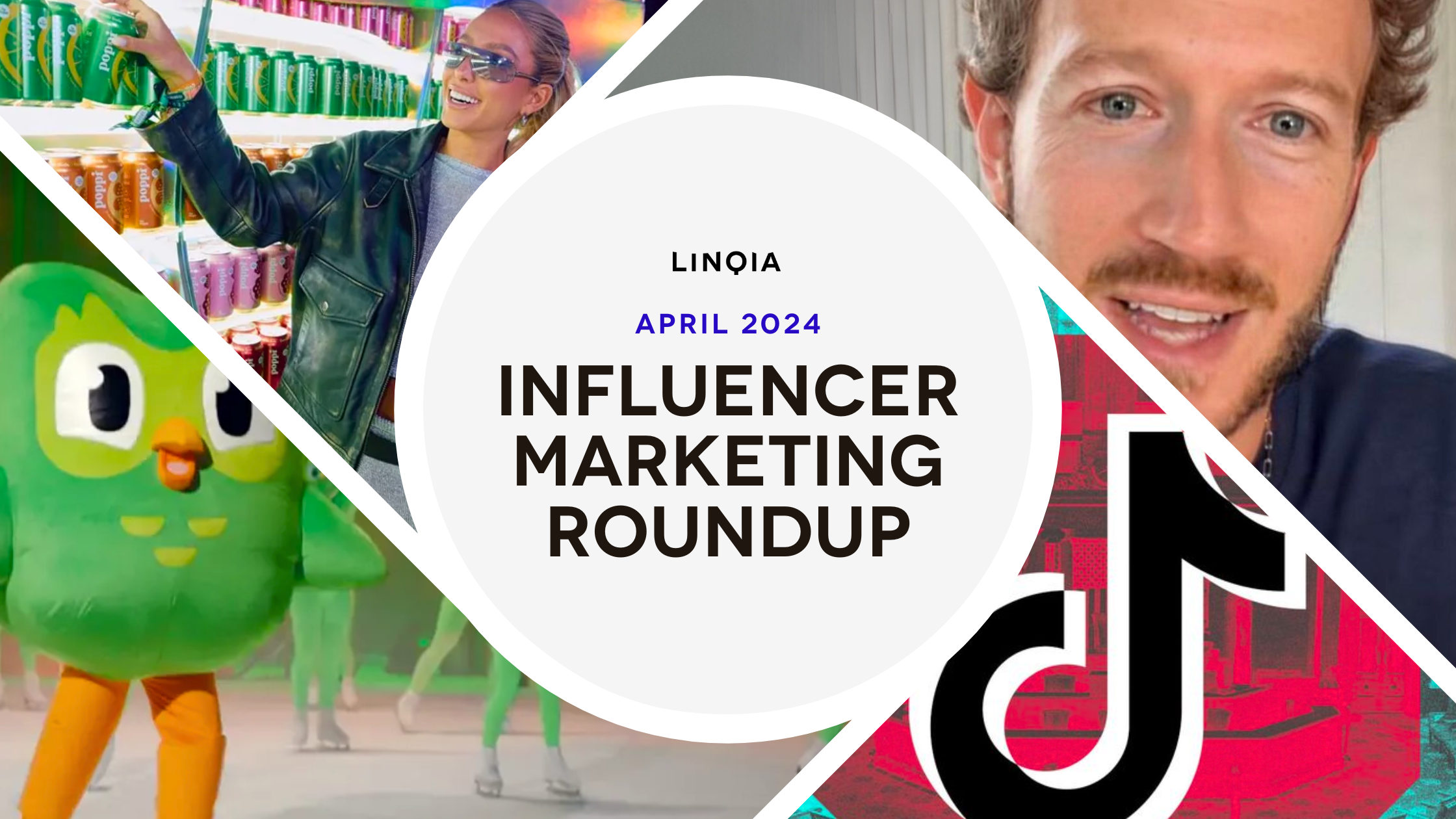Top News and Stories
Below are Linqia’s favorite stories shaping our industry.
Snap Unveils New Features at 2023 Partner Summit
TLDR: Snap impressed the audience with a slew of new features including an expansion of ad revenue sharing (from Snap Stars to anyone with 50,000+ followers, 25 million monthly Snap views and who post at least 10 stories a month). My AI is now available for free to all of the users (over 2 million chats per day), augmented reality mirrors are coming to a retailer near you, fans will be able to see AR visuals at music venues around the country, and Spiegel made it very clear that he wants to see TikTok banned.
Twitter revealed their algorithm
TLDR: Twitter made their recommendations algorithm public, and while it’s incredibly technical and confusing, here are some interesting learnings – shout out to Jack Appleby for a great recap
- The algorithm weighs each like and retweet significantly higher than replies, which is surprising news to many marketers
- Images and video give you a 2x boost, so keep including those visuals.
- Twitter blue gives you more reach, it’s right in the algorithm and thus very much worth the $8/month price tag for most brands.
- Be consistent. Twitter clusters users into communities and a lot of content prioritization is based on that segmentation so don’t stray too far from your core topics.
- Following to follower ratio matters. If you follow as many or more people as are following you it’s going to hurt your content scores.
- Don’t make up words, if a word isn’t recognized by a common language or interface language, Twitter severely penalizes that content with a 0.01 ranking.
Twitter reinstates Blue verification mark for top accounts — even if they didn’t pay for it
TLDR: Days after removing the blue verification badge from ‘legacy’ verified accounts, Twitter has now partially backtracked and reinstated verified blue badges to some high-profile accounts with over 1 million followers, allowing the accounts to keep their checkmark without subscribing to the pay-monthly Twitter Blue subscription service.
Twitter will require all advertisers to have a verified checkmark
TLDR: Moving forward, it sounds like anyone wanting to post an ad or promote a tweet will have to cough up $8/month for Twitter Blue, or $1,000 per month to be recognized as a verified organization. With advertisers already fleeing the platform this feels like yet another reason why they will continue to jump ship
Twitter Implements Prioritized Display of Tweets from Twitter Blue Subscribed Accounts
TLDR: Twitter is now prioritizing tweets from paying profiles in the main ‘For You’ feed. This means that Twitter Blue subscribers are now going to see much more exposure for their tweets in the app. People don’t like it, which is why Meta dropped prioritization from their verified offering, but Twitter is still pushing forward.
Twitter’s Re-Launching its Creator Subscription Program, with Lower Barriers for Entry
TLDR: The new ‘Subscriptions’ program is a re-naming of its ‘Super Follows’ initiative, for which Twitter’s also reducing the entry requirements. Users previously needed to have at least 10k followers to qualify but now that number has been reduced to 500. Creators will have the option to charge $2.99, $4.99, or $9.99 per month, with all of the revenue being passed on to creators for the first year.
TikTok Launches New Push on In-Stream Shopping
TLDR: TikTok is not giving up on in-stream shopping, launching a new push with a range of sellers designed to boost shopping in the app. The platform is currently inviting selected retailers to join its in-app shopping push, offering them big subsidies on shipping and sales to help maximize interest.
TikTok Is Quietly Rolling Out an Affiliate Program for US Creators
TLDR: TikTok has entered the initial stages of a new affiliate marketing offering for creators through its Shop product. This would pave the way for creators to earn commissions that allow for product promotions via videos, profiles, and even live-streaming sessions, with the affiliate rates being allocated by the respective sellers.
Meta reports first sales increase in 4 quarters
TLDR: Meta shares jumped 12% after the company reported their first sales increase in four quarters, and their forecast for the second quarter also exceeded expectations. The company says time spent on Instagram grew 24% thanks to Reels.
Instagram takes on Linktree and others with support for up to 5 ‘links in bio’
TLDR: Instagram rolled out a new feature for adding links to user profiles that challenges Linktree, Beacons and numerous other “link in bio” solution providers. It will allow users to add up to five links to their Instagram profile bios, which can direct their followers to other content including profiles on competing social platforms.
Meta Plans to Expand its Reels Monetization Program to More Creators
TLDR: Meta’s “Reels Play Bonus” program, which provides cash incentives for the best-performing clips may be on its way out, but the company is expanding access to Reels monetization via ads overlays to more users in the coming months and encouraged participants to switch on Professional Mode in order to access its coming creator features.
Instagram announced a slew of new updates for Reels
TLDR: The updates include 1) A new discovery element to enable creators to find the latest trending audio and hashtags within Reels (a lightweight version of TikTok’s creative center), 2) Creative tools merging into the video composer screen to make it easier to create better Reels clips (like a CapCut within Reels), and 3) Insights into total and average watch time for Reels.
Meta is making changes to Shop ads
TLDR: Meta will be removing the option to host Shops that refer buyers to a third-party website, with brands either running a fully enabled shop in-app, or not being able to run Shop ads.
YouTube Shares Tips on How Creators Can Optimize for Connected TV Viewing
TLDR: CTV is the fastest growing viewer segment for YouTube, and the platform outlined five keys to consider when creating content for CTV including 1) Create in 4k, 2) Use high resolution thumbnails they will appear much larger on TV screens, 3) Hook viewers in the first 10 to 30 seconds to capitalize on inline preview, 4) Make episodic content and mark episodes within the playlist settings, and 5) Have a consistent thumbnail look and about section for each episode.
Pinterest announces multiyear ads partnership with Amazon
TLDR: The new deal will make Amazon Pinterest’s first partner on third-party ads. It will allow brands advertising via Amazon’s ad network to host their ads on Pinterest, and users who click on an Amazon ad on Pinterest will be taken directly to Amazon to make the purchase.
The next battleground for Instagram and TikTok is search
TLDR: Last year, TikTok launched search ads in a limited test that it is starting to roll out more broadly. Instagram has also released search ads. These platforms are quickly becoming the preferred method of discovery for younger generations and it makes sense why they are doubling down on paid options for brands.
Brand Influencer Highlights:
Orangetheory Brings Viral TikTok Fitness Trend To Their Studios For National Walking Day
TikTok sister app Lemon8 looks to creators to help it grow to the next level
Cerave’s dermatologist influencer strategy shows growth of experts as creators
Pacsun turns to TikTok for livestream shopping
How the fruit roll-ups ice cream TikTok trend influenced the brands social strategy
Hard Mountain Dew Throws a Rager at a Florida Retirement Village
Bud Light’s Dylan Mulvaney Partnership – Marketing Experts React to Controversy
Why Coke Recruited an Army of Influencers for Food Focused Campaigns
Reports Worth Reading:
TLDR: In a year over year analysis (Q1 2023 vs. Q1 2022), average influencer campaign spend grew 17% year over year, number of influencers per campaign remained relatively flat, and spend per influencer is up 15.5%
TLDR: TikTok released a document following the congressional hearing showcasing 16 myths that TikTok Ad execs have been sharing with marketers to debunk the primary privacy concerns expressed by Congress. Some of these answers would have been valuable to communicate during the hearing itself, but better late than never.
Jungle Scout’s Q1 2023 Consumer Trends Report shows generational differences in consumer behavior.
TLDR: 43% of Gen Z consumers start their online product searches on TikTok, a higher number than those who start on Google. This is further proof of the major shift in product discovery habits of younger generations.
VidMob analysis of 16k LinkedIn campaigns demonstrates key tips for success
TLDR: The data shows that LinkedIn users love stats and data, short videos between 7 and 15 seconds work best, showing a person within the first quarter of a video clip resulted in a 175% increase in view-through rates, displaying a CTA in the first 6 seconds led to a 98% lift in view-through rate, and videos with text overlays saw a 72% increase in CTR
Emplifi’s 2023 State of Influencer Marketing Report dives into volume of sponsored content
TLDR: Seven percent of influencer content on Instagram is sponsored, and the larger the influencer, the less frequently they share sponsored content. On average, influencers with 10,000 followers or fewer post 67% more sponsored content than influencers with over 100,000 followers.
Decoding the Youtube Shorts Algorithm
TLDR: Paddy Galloway’s team studied 3.3 billion Shorts views to decode the algorithm and uncovered insights including, 1) The shorts algorithm does appear to favor longer videos of 40 seconds+, 2) The new Viewed vs swiped away metric matters and it’s important to make your first second punchy to hook viewers early, 3) Engagement metrics (likes, shares, comments) don’t seem massively important, 4) Shorts are a good way to grow subscribers – average of 16.9 subs per 10,000 views, and 5) Shorts don’t currently drive significant revenue for creators – on average creators are making 6 cents per 1,000 views.




